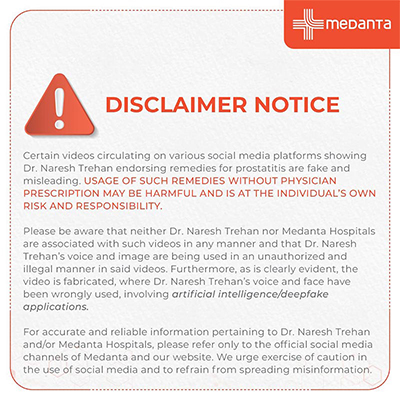
Multiple Magnet Ingestion by a Toddler
Ingested neodymium magnets are a serious health hazard for children that carry an extremely high risk of intestinal obstruction and perforation as loops of bowel may get trapped between multiple magnets. We report the case of a child who ingested multiple magnetic beads, and subsequently developed intestinal fistula requiring surgical intervention.
Case Study
A 2.4-year-old child, who ingested multiple magnetic beads, presented to Medanta - Gurugram, and was admitted under the Gastroenterology department of the Institute of Digestive and Hepatobiliary Sciences. The child had ingested three magnetic beads from a toy a month ago. Before coming to Medanta - Gurugram, the parents consulted
multiple doctors and were advised to wait and
watch after prescribing oral laxatives to be continued till Day 25 post ingestion. On the advice of a local physician, X-ray of the abdomen was performed, which showed that the magnetic beads were
stuck in the intestine. They then consulted at Medanta - Gurugram and the child was admitted immediately.
Post admission, X-ray abdomen erect was done to check the position of the magnets. It showed no change and the magnets appeared to be stuck to each other.
Under fluoroscopy, three balls were identified while endoscopically one ball was seen adhered to mucosa; this was removed using Roth Net forceps. The other two balls could not be identified in the rest of the colon till up to 25cms of terminal ileum. The possibility of sealed fistula with the other two magnets was considered.
Metallic foreign body (magnet) adhered to caecum visualised in colonoscopy
CECT abdomen showing radio-dense foreign body throwing significant metallic streak artifacts noted lying in relation to the terminal ileum
X-ray abdomen erect showing metallic foreign body (magnets) seen adhered to each other
This was followed by a contrast enhanced computed tomography (CECT) scan of the whole abdomen using oral gastrographin. A radio-dense foreign body throwing significant metallic streak artifacts was noted lying in relation to the terminal ileum. Cecum and rest of the large bowel was unopacified and was unremarkable. No significant extra-luminal air to represent perforation was noted in the scan. Due to artifacts, it was not possible to comment if the foreign body was outside or inside the gastrointestinal (GI) lumen.
As these metallic bodies could not be identified even after thorough search on a colonoscopy, the
His post-operative clinical course was uneventful and he was discharged after establishment of feeds on Day 7 after the surgery.
Conclusion
Healthcare professionals involved in the care of children should be educated about the serious risks posed by ingestion of magnets from toys. Patients who have ingested magnets may not become overtly symptomatic until a significant degree of bowel injury or even perforation has occurred.
The general consensus within the North American Society for Pediatric Gastroenterology, Hepatology, and Nutrition is that if conservative management is chosen, direct patient observation in a controlled setting should be maintained. In addition, serial
patient was advised diagnostic laparoscopy with foreign body retrieval.
After taking parents’ consent, the patient was taken for surgery. The foreign body was identified and retrieved laparoscopically and the bowel end were repaired. These magnets had created fistula between the caecum and the mid jujunum.
Although, classically, open surgery is done, we choose the laparoscopic approach to provide benefit of access, magnification and minimal scarring.






